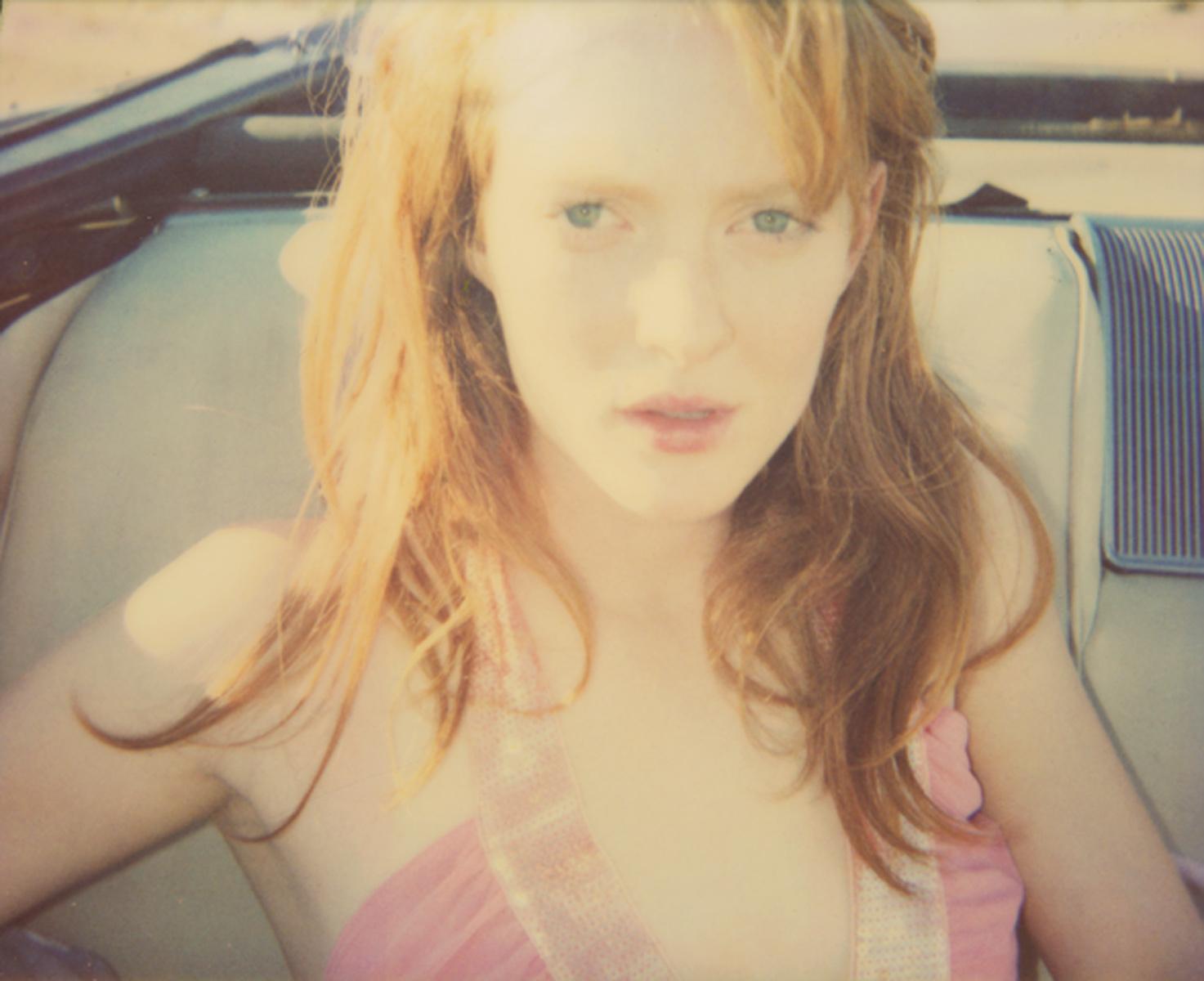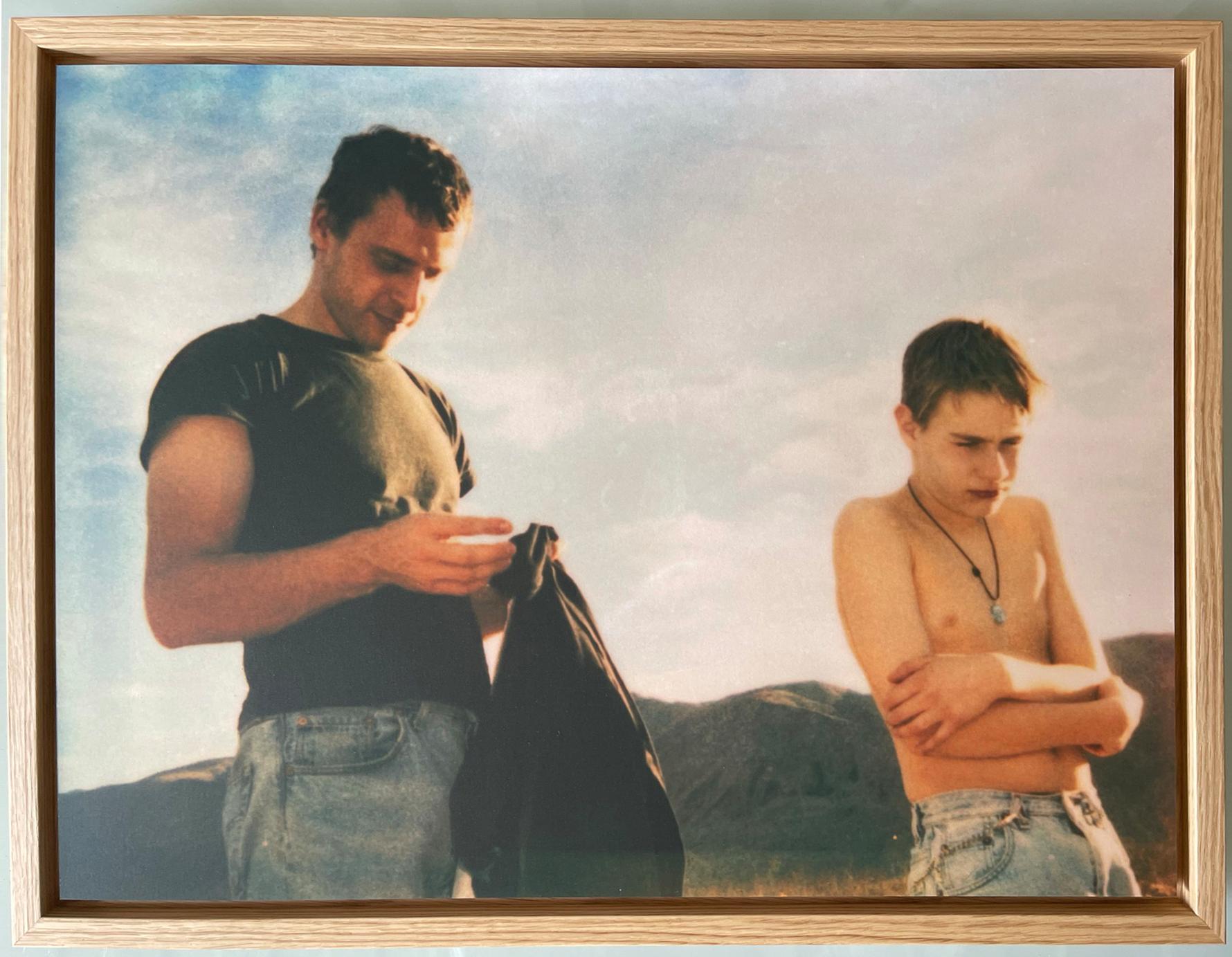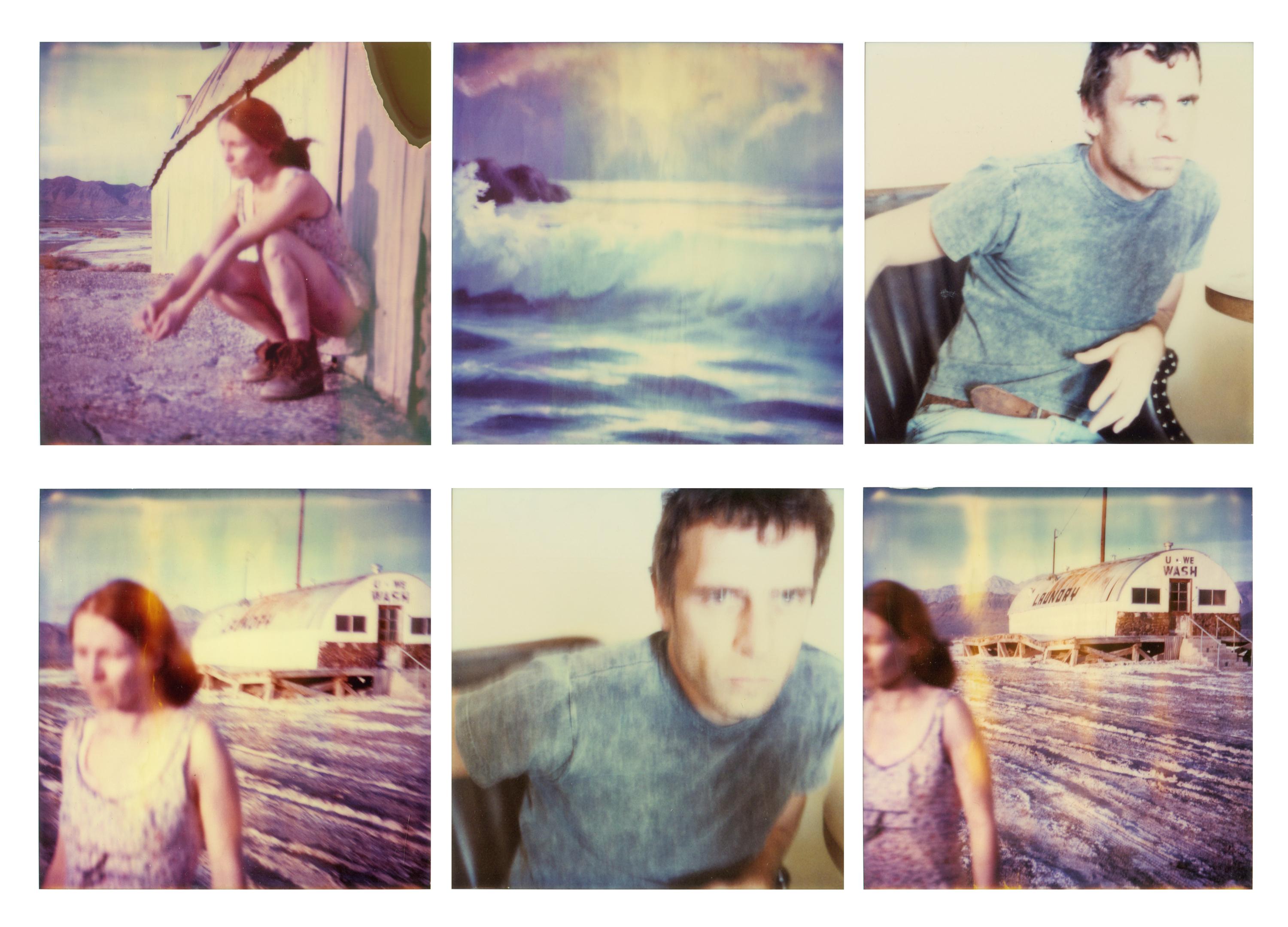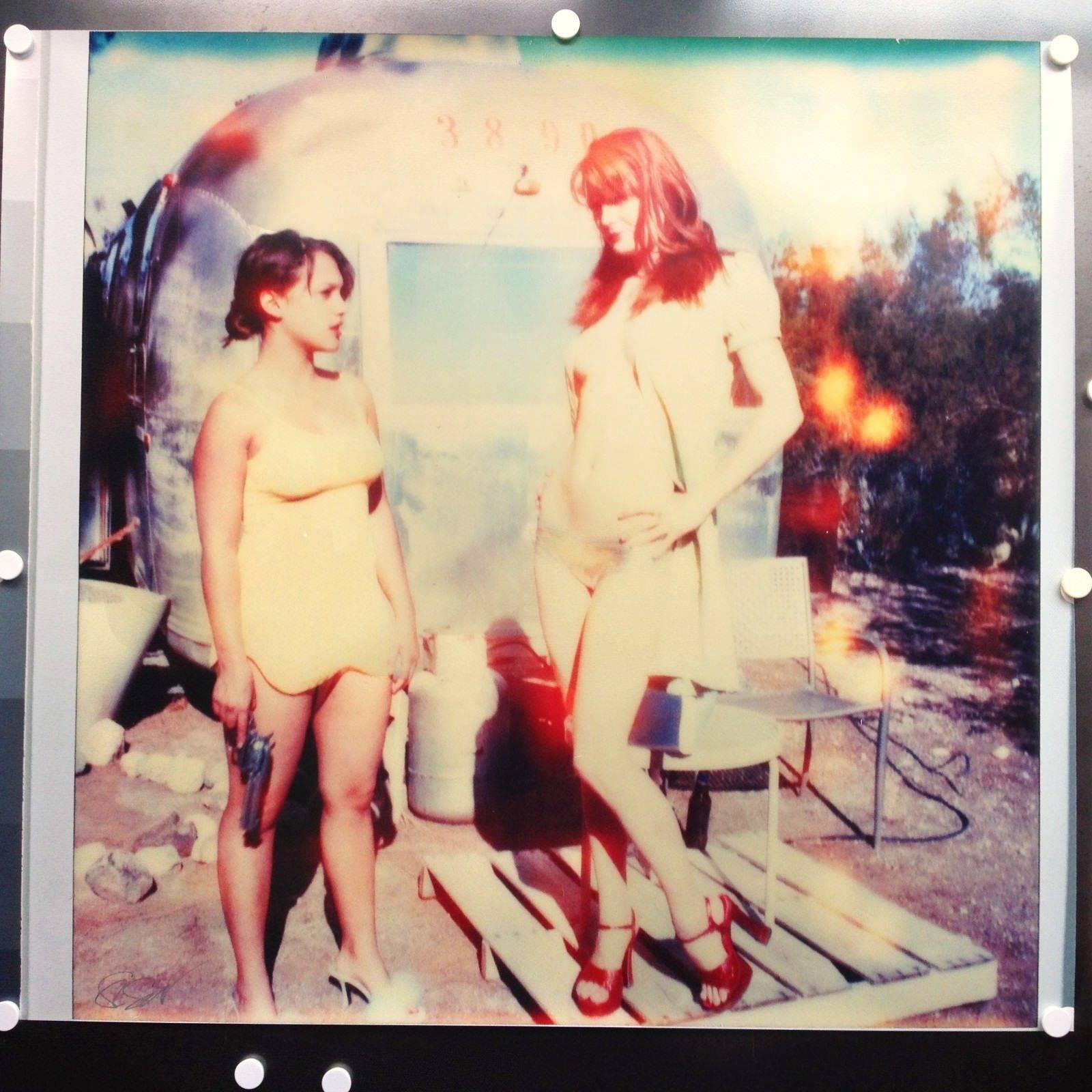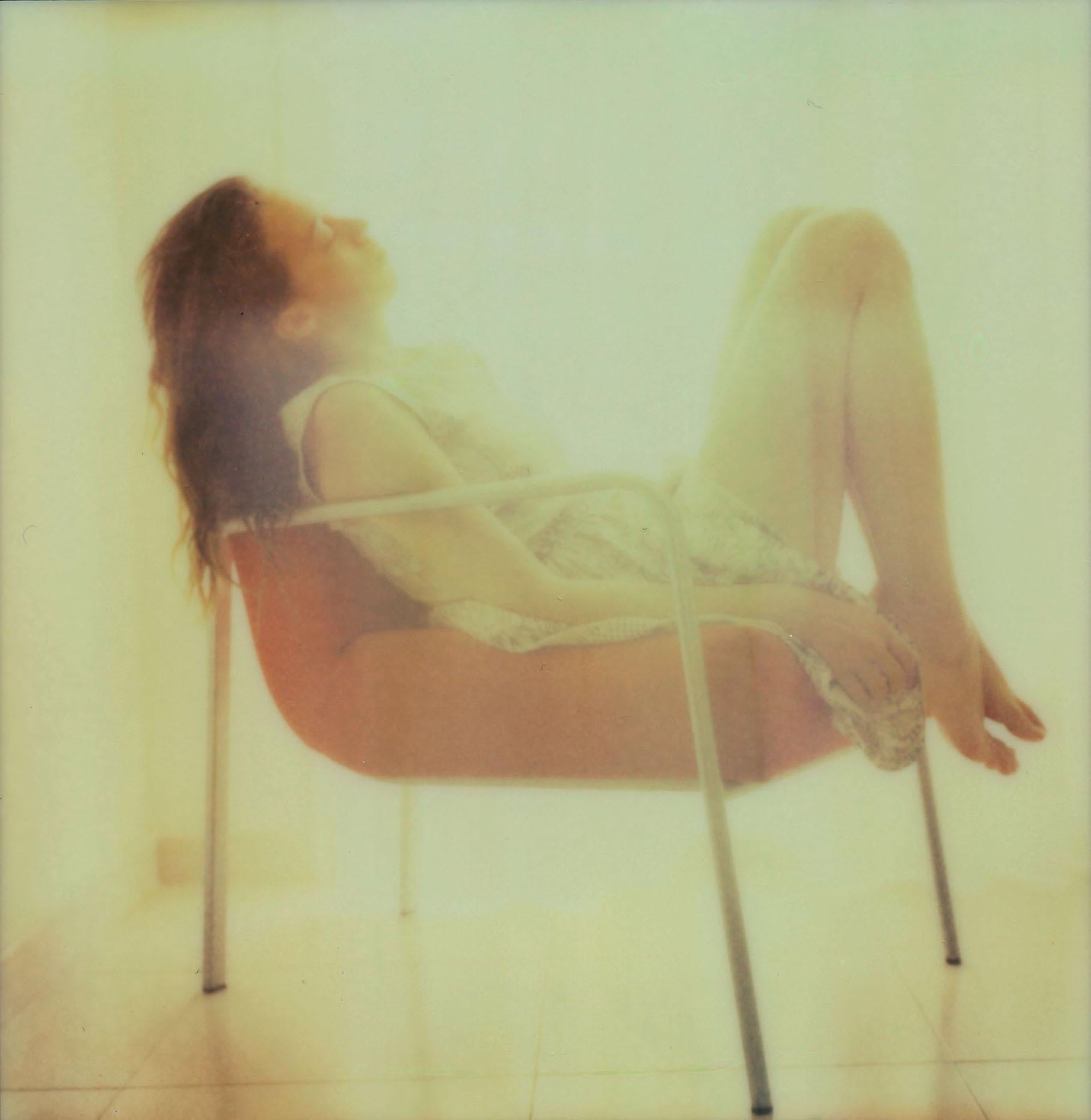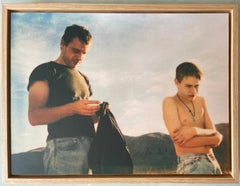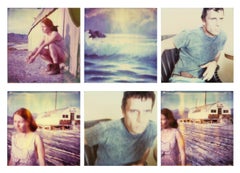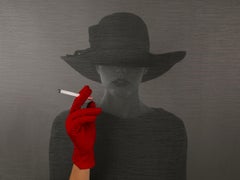Haley and the Bird (29 Palms, CA) - 2013
50x50cm,
Edition of 10, plus 2 Artist Proofs.
Archival C-Print based on the Polaroid.
Certificate and signature label.
Artist inventory number: 16931.
Not mounted.
Stefanie Schneider's '29 Palms, CA' project
29 PALMS, CA is a feature film / art piece that explores and chronicles the dreams and fantasies of a group of individuals who live in a trailer community in the Californian desert. The world depicted in the film is inspired by the photographs of German artist Stefanie Schneider in that it combines the notions of reality and fantasy and explores the resonance of both within a desert landscape and a transient culture. The characters portrait in the film, (an actress, a singer, a DJ, a motel owner and his wife, a US army soldier, a mystic, a princess, a recluse, a movie ticket seller, two hitchhikers, a doctor, and so on), are to be played by both actors and non-actors. The story is constructed through the interpretation of real life communications (i.e. phone calls, emails, conversations) that have taken place as the individuals depicted in the story try to make sense of events that have occurred in real life. In this sense the story is, in part, a biography and social commentary, and the characters are the exaggerated alter egos of the individuals who play them. The structure of the plot is fairly simple. An actress working as a telemarketer is inspired by a singer who is new to town and is featured on the local radio station. The radio station runs a program for lonely hearts and a charismatic DJ uses the show to reveal the hopes and dreams of the towns “hottest women”. One night a panicked German female caller captivates the community with a painful story about a sexy “Smoke Jumper” (a mysterious and super real alpha male). Everybody in town is listening to the program and nobody is quite sure what to say. Life in general continues and we witness and explore the various interactions. The actress meets the singer and they become famous. The US Army soldier dies on his way to battle. The foreign princess discovers that the jewels she has come to sell are fake. The motel owner‘s wife has an affair with the pool boys and so on. All the while the community is united by their loyalty to the “Lonely Hearts” radio show and through the disturbing revelations of the German woman and the details of her sordid affair. The stories she tells are explored through the imaginations of the listeners and through the memories of the teller. The smoke jumper becomes a pervasive figure who in some way effects the lives of all those who listen to the story. He seduces women, is linked to a local thievery, a rape and a possible death. The story comes to conclusion when this chaotic character quits town leaving in his wake a trail of destruction and despair. What is left is a void, a space for transformation as the wounded community rediscovers itself in its quest to make sense of what has happened. A defining feature of the film is the use of still images and the use of voice over. Characters talk to us / themselves / you about their ambitions, memories, hopes, fears and dreams. The film is to be shot using a mix of super 8 and 16mm film stock and Polaroid images. Certain computer generated effects will also be used to enhance the films surreal mood and to animate its dark humor.
A German view of the American West
The works of Stefanie Schneider evoke Ed Ruscha's obsession with the American experience, the richness of Georgia O'Keefe's deserts and the loneliness of Edward Hopper's haunting paintings. So how exactly did this German photographer become one of the most important artists of the American narrative of the 20th and 21st century?
This theme of preservation and deterioration is a core part of Schneider's oeuvre. In an interview in October 2014 with Artnet, the artist explained how her own experiences of pain and loss inspire her. ''My work resembles my life: Love, lost and unrequited, leaves its mark in our lives as a senseless pain that has no place in the present.'' The first to use expired Polaroid film as their medium and in doing so inspired the resurrection of Polaroid film itself. Saving the last production line in the world from it's impending destruction in 2008.
Schneider's subjects are often featured in apocalyptic settings: desert planes, trailer parks, oilfields, run-down motels and empty beaches, alone, or if not, not connected with one another. ''It is the tangible experience of ''absence'' that has inspired my work,'' explained Schneider.
(Barnebys UK, May 3, 2017
Stefanie Schneider received her MFA in Communication Design at the Folkwang Schule Essen, Germany. Her work has been shown at the Museum for Photography, Braunschweig, Museum für Kommunikation, Berlin, the Institut für Neue Medien, Frankfurt, the Nassauischer Kunstverein, Wiesbaden, Kunstverein Bielefeld, Museum für Moderne Kunst Passau, Les Rencontres d'Arles, Foto -Triennale Esslingen, Bombay Beach Biennale 2018.
